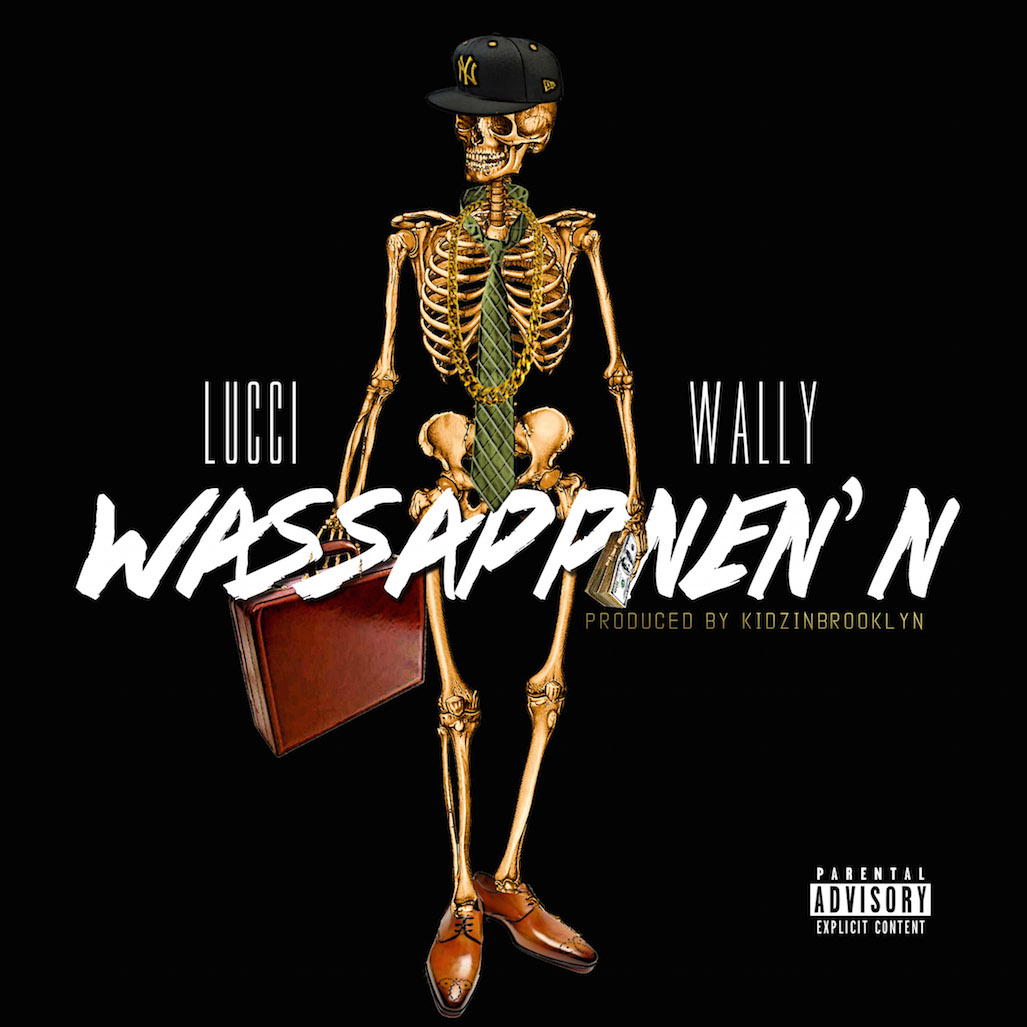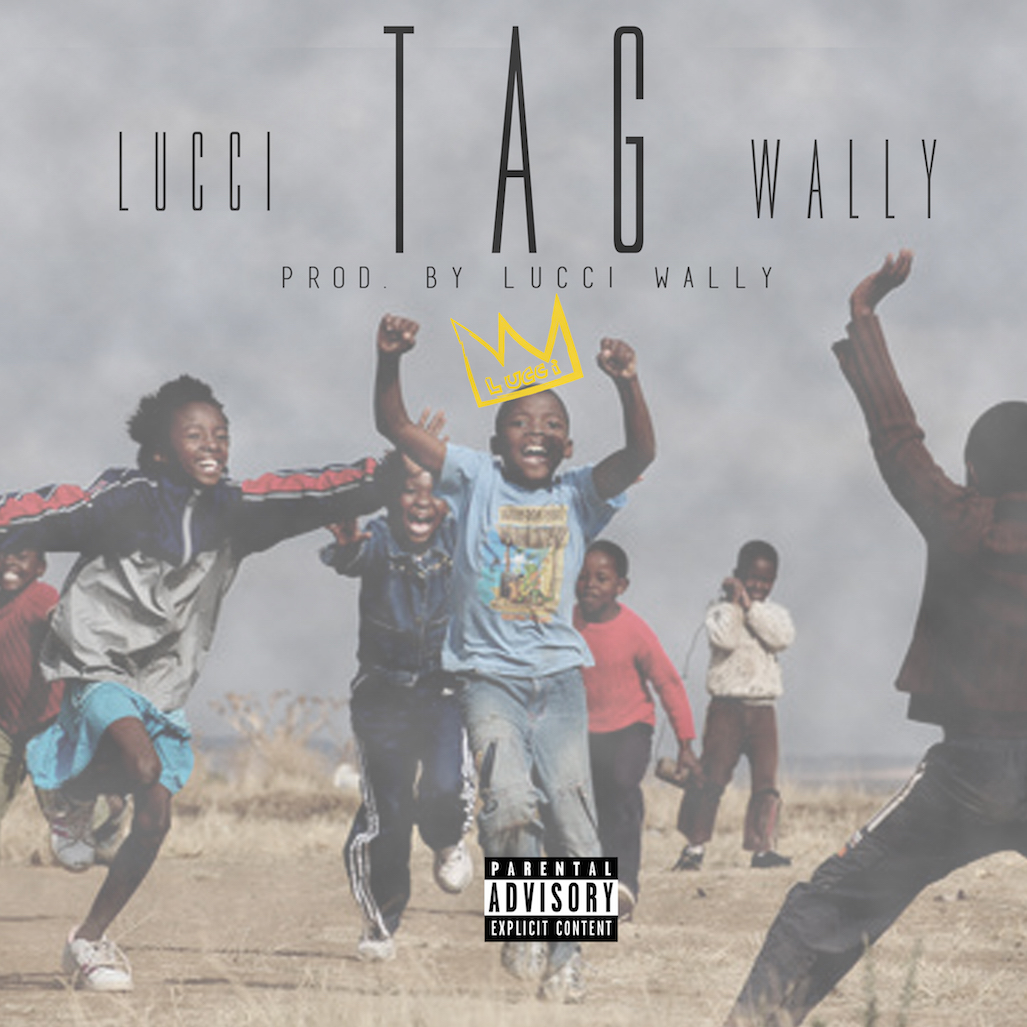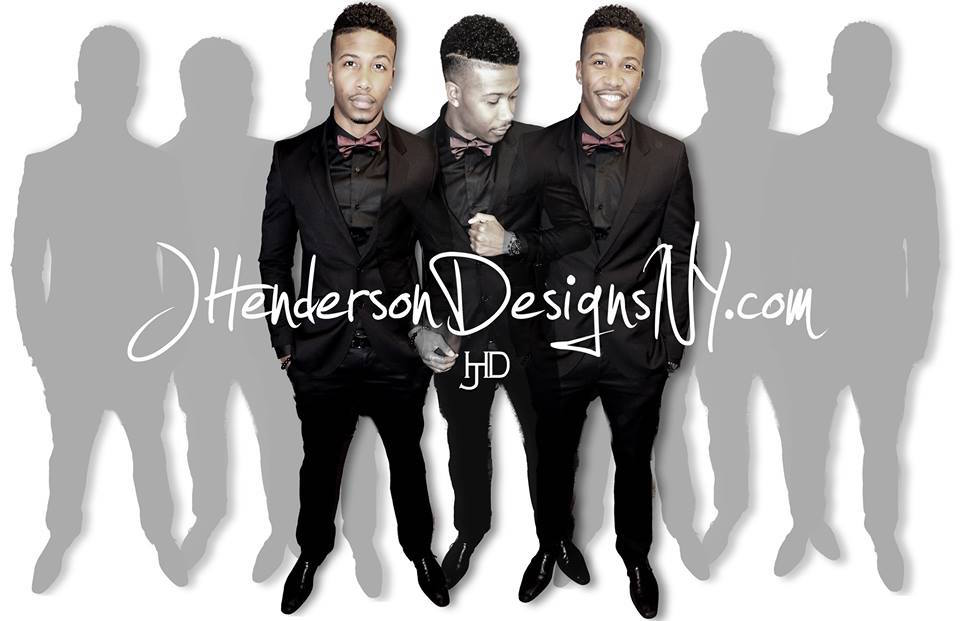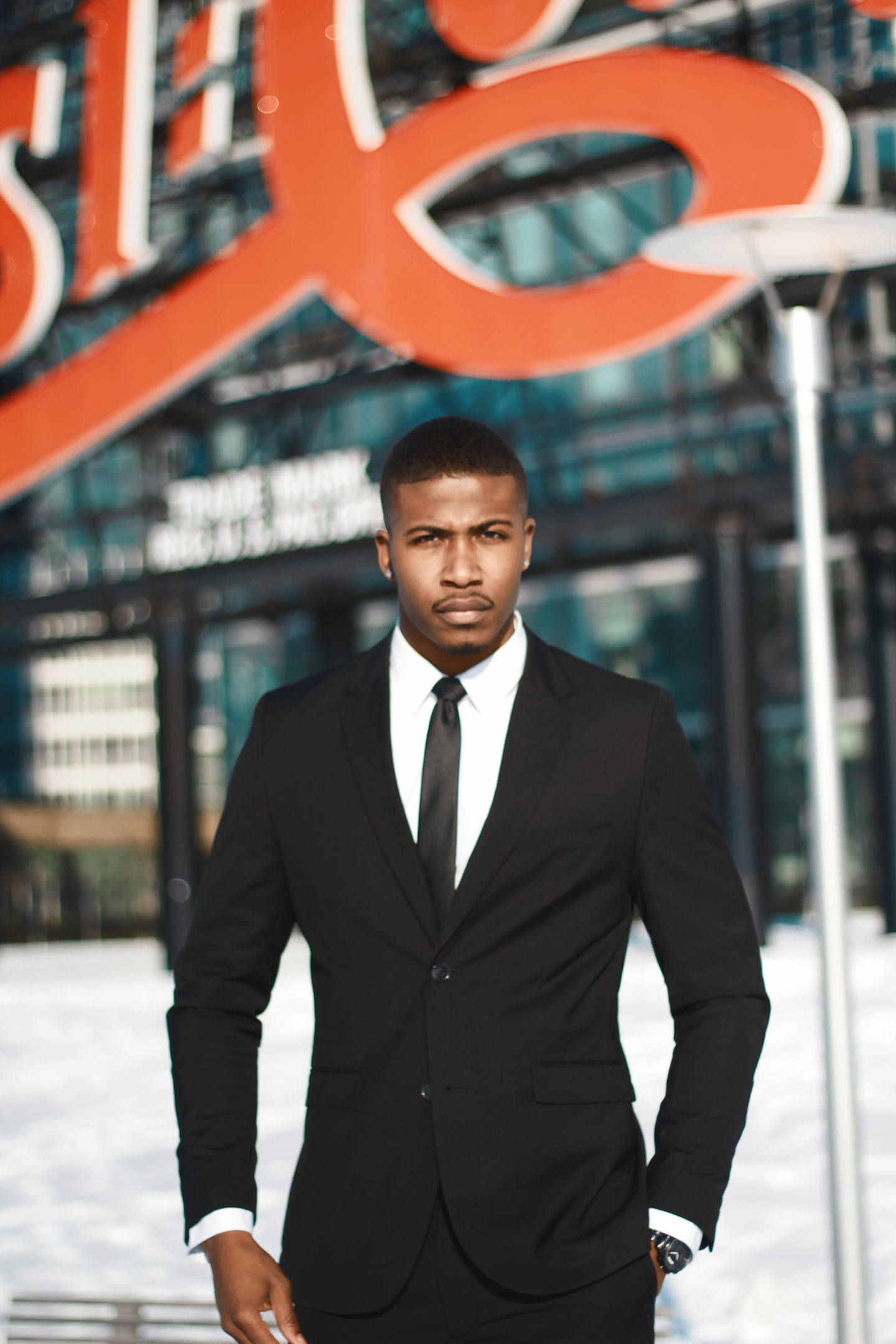
Jonathan Henderson
Jonathan Henderson was in high school when he took his first graphic design class. In 2007, before Pandora or Spotify, his teacher assigned the students a project to design CD covers. It combined his profound love for music and events, and he knew he wanted to become a professional artist. When he was 18, he created his business, JHenderson Designs, which specializes in flyers, logos, business cards, CD/single covers, and photography. The road to owning his own business and managing projects has not been easy—sometimes it’s been especially difficult because of the color of his skin— but with his talent and determination, Jonathan hasn’t let anything stop him.

The logo for JHenderson Designs from 2009 to today (Jonathan Henderson)
Q. Why did you choose to pursue graphic design?
I was always into art as a child more than anything else. I did the music thing for a few years, did the sports thing for a few years, yet never stuck with either of those. I was always into editing photos and making them look cool with the different programs on the computer, and once Myspace came out, that’s when the recognition began. I looked around at different profiles and saw the different layouts people would create and just knew right away I could do that, if not better. I was in sixth grade at the time and was using PaintShop Pro to create my graphics, and once people saw my layouts and how official they actually looked, I became the go-to guy for the Myspace layouts, and that began this whole era. I would get contacted by many friends, friends of friends, family members, all to create their layouts exactly how they wanted them and would get nothing but positive feedback from them. And I liked that satisfaction. Once I got into high school and I saw they had a computer graphics course, I hopped right on that and that's when I was introduced to the Adobe programs, like Photoshop and Illustrator, and fell in love with both of those programs. Come 12th grade, it's time to decide your college major; graphic design was the first and only choice I made with no hesitation.

A CD cover designed by Jonathan for Lucci Wally (Jonathan Henderson)
Q. What were your goals when you declared your major? Was starting a business your original goal or did you discover that idea while you were in school?
Once I got into college is when I really started to take my business very seriously. I would always create graphics for friends, CD covers for local artists around Long Island and NYC, or some party flyers, but never put a price on it. In one of my first graphic classes in college, the professor had us create a logo for ourselves as if we had our own business. That is when I came up with "JH Designs" (now JHenderson Designs) and had a simple JH logo which looked like it could go on a varsity jacket. When I first pursued graphic design as my major, I just thought I'd go to college and then get a job in the graphic design field but had no exact direction of where I wanted to work. After taking different graphic design classes and business courses, I knew that starting my own business was what I wanted to do; I just needed the proper guidelines on how to do so.
Q. Did you have any mentors that inspired you?
I didn't follow too many different graphic artists. I taught myself basically everything I know. I had met a few different graphic artists through mutual friends, and we would share feedback on each other’s work and give pointers. My college professors were a big help when it came to the proper guidelines on how to run my business and what I need to be successful. I don't read much either, but I read one book by Steve Harvey called Act Like a Success, Think Like a Success, and he guides you through the steps it takes to be successful as well. Reading his story and seeing where he came from—how he came from nothing and made a name for himself by HIMSELF—and is now one of the top comedians in America... That motivates me even more to keep going and never give up.

A CD cover created by Jonathan for Lucci Wally (Jonathan Henderson)
Q. Did you ever feel that people looked at you differently, as if you weren’t able to achieve what you have?
In the business world, just the way you dress can change one’s views on you and how seriously they take you. Being a young black male starting a business in a predominately white area, you need to keep that in mind at all times. My mother always would tell me, “You never know who is out there watching you,” and that is very true. Graphic design is a white-dominated field as well, so I always make sure I carry myself correctly and in the proper way so I'm taken seriously by everyone. Which is another reason I chose to have my own business instead of working for someone else, because I like to prove myself to people and make them step back like, “Wow this guy really knows what he's talking about.”
Especially when it comes to networking, you have to talk to all different types of people whether they're white, black, Asian, Hispanic, etc. You need to be able to connect and have the proper conversation to fulfill whatever their needs. Speech and presence are key. I know what I am capable of, but there are times when people try to belittle you because they feel you don't know what you’re talking about, but that's when the proper knowledge comes in as well. Once you hit them with facts, they have nothing left to do but respect you. Sometimes it takes a lot of patience to deal with these type of clients, but that comes with the business as well.
Q. How have you learned to approach these situations in the business world and not let racism hold you back?

A design to promote Jonathan's website (Jonathan Henderson)
I never let racism hold me back from anything. Especially with all of the events occurring lately with police brutality and racial inequality, it's clear proof that we're not all looked at or treated the same. It's a shame to see all these innocent lives taken—over something so small that isn't worth being shot and killed over. As harsh as it sounds, being a black male, I'm automatically looked at as a threat. It's my job to make a difference and change that view. Everyone could make a difference if we all came together and showed the cops and everyone out there that sees differently that we are all equal and should be treated equally. The number one compliment I get from different people I encounter is, "For a young black male, you really carry yourself so well. Keep it up." I appreciate the compliments, but to me, it should be for a young male in general; whether black or white, we should all carry ourselves the same way. Blacks shouldn't have to go above and beyond to impress the higher power if the white man doesn't have to. It's a cruel world out there but only WE can make a difference.

Jonathan Henderson (Shannon Wallace)
Q. What were your biggest setbacks when beginning your business?
When first starting my business, I didn't have too many major setbacks. The financial aspect is very important especially with the new Adobe payment plan. When I first started out, you had to buy the programs, like Photoshop and Illustrator, and those were very expensive, so I always had to figure a way to get those programs and hope my laptop didn't crash (I'd have to start from scratch). Also when it came to the invoice for the clients, getting the clients to pay was tough because I always felt bad asking for the money. Meanwhile, I'm running a business.
Q. How did you press on and overcome those difficulties?
Responsibility really fixed all those problems. I started to save my money and ended up getting a Macbook Pro to avoid all the laptop crashes. It also provided more laptop space and was much needed especially for a graphic artist. I learned how to manage invoices correctly as well and am way more organized now. I took an advertisement/business course in the summer of 2014 and learned a lot about advertising and money management. I started using PayPal for clients to make payments, and since then, I've yet to encounter any payment problems.
Q. How do you manage your freelance work and your other two jobs?
It gets pretty tough managing three jobs on top of my graphics. My full-time job, working with the developmentally disabled, is based out of a group home. Whenever I get some free time there I try to get some work done. Doing overnight shifts, you have to stay away for 12 hours, so I'd spend the entire night just listening to music and designing all night long.
My second job as a server in a restaurant is hard because I obviously can't design there, but I use that time to network and get new clients through my tables.
Q. You’re fairly popular on social media. How has this helped you advertise your work? Are there other ways you market your design services?
Social media is the No. 1 place for advertising yourself and your artwork. The biggest platforms are Facebook, Instagram, and Twitter. To build your following, you need to post A LOT, follow other pages similar to what you’re looking for, and just promote as much as possible. A lot of businesses even hire people just to handle the social media because you want to be all over it. It's very important especially with this generation. Everyone is on social media. The more you post, the more you have a chance for your post to be reposted or even recognized by the right person. My website is attached to all of my social media pages, so that gets my website out there as well.
Q. What other advice do you have for young entrepreneur-minded art majors?
My advice to other artists is to work until you fulfill your dreams. Money isn't going to just fall on your lap; you have to go out and get it. I work three jobs, seven days a week, nonstop, all for my business in the end. The parties will always be around, so while you're young is the time to work and make as much money as possible for yourself and for your business or brand or whatever it is you’re going to do. Don't be afraid to take chances either because you never know where they can take you. Be versatile with your art and be creative; don't just stick to one thing. The more versatile you are, the bigger clientele you build and the more creative you allow your mind to be.

Jonathan's business card (Jonathan Henderson)
Finally, fill your circle of friends with people on the same grind as you. You will never grow hanging around people that don't want to grow with you. Your circle needs to motivate you to do more and better, and you need to motivate and inspire them as well. Steve Harvey states in his book Act Like a Success, Think Like a Success, “You should be living your life surrounded by people who are like-minded, service-oriented, and grateful, people who are trying to accomplish things, and who bring something to the table."
-
My College Story: Feeling Accomplished after Earning Three Degrees
-
My College Story: The Possibilities of an English Degree
-
My College Story: Technology and Design
-
My College Story: From Baseball in College to Baseball on the Island
-
My College Story: Taking Chances and Trusting Your Path to Education
-
My College Story: Confronting the “Home Ec” Stigma
-
My College Story: Repurposing an Architecture Degree
-
My College Story: Graduating After Years of Study, Transfers, and Time Off
-
My College Story: Following the Military Path
-
My College Story: Thriving at Clemson University
-
My College Story: Why I Suggest a Gap Year
-
My College Story: Making the Most of Community College

